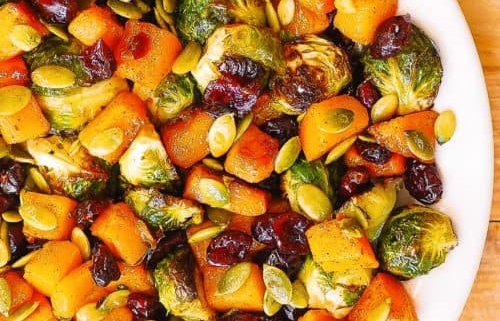Diabetes News – November 2019
November is Diabetes Awareness Month
Consider that while almost 30 million people in the U.S. have some form of diabetes, one in four don’t even realize they’re walking around with the disease. National Diabetes Month is an annual event each November to boost awareness about the risk factors, symptoms, and types of diabetes. If you’ve been recently diagnosed with either Type 1 or Type 2, or if you are considered pre-diabetic, hear the stories, check out the latest research, and connect with others who can help you on your journey to live a healthier life.
There are two main conditions
Type 1 diabetes occurs when the body can’t produce insulin, a hormone in the pancreas that breaks down carbohydrates into blood sugar or glucose, for energy. Insulin therapy helps the pancreas to function normally. Many children suffer from Type 1 diabetes although it can affect people of any age or background. Type 2 diabetes is the most common form of the disease where the body is unable to process our internal insulin well enough to keep blood sugar at normal levels.
Know your risk factors
You may be predisposed to Type 2 diabetes if you are overweight, older than 45, your parent had Type 2 diabetes, you barely exercise each week, and you have been diagnosed with prediabetes. Losing weight is a key preventive measure. With a 10-14 pound weight loss, you can improve your chances of avoiding or even beating diabetes. Try to exercise about 30 minutes a day, five times per week.
How to Observe National Diabetes Month
1. Commit to a healthier lifestyle
Discover ways that you can live a little healthier by reviewing your habits. Are you getting enough sleep? Fatigue can cause a resistance to the insulin your body needs — and daytime tiredness can stop you from getting some life-saving exercise. Drink more water because dehydration keeps your body from functioning well. Be adventurous and add some new veggies and fruits to your diet to help keep those hunger pangs at bay.
2. Assemble a “sick day” kit
It pays to be ready for those days when your diabetes or some other illness gets you down. With a “sick day” kit, you’ll be prepared in case you need to stay home and recuperate or head out to see your doctor. Some of the items in your kit may include blood glucose monitoring supplies, ketone test strips, glucose tablets or gel, a thermometer, hand sanitizer, an alarm clock or timer to stay on top of your glucose levels, and soft tissues. It’s your list so tailor it for your needs.
3. Create a small cookbook
There are restrictions on what people with diabetes can eat. But that shouldn’t stop you from enjoying tasty treats. Scour special cookbooks and websites designed for diabetics and experiment with recipes. Choose from delicious ice cream cakes using light sugar, reduced-fat whipped toppings, sugar-free hot fudge sauce, or low-cal casserole because you don’t have to suffer with less flavor because of diabetes.
And speaking of cookbook and recipes…
Thanksgiving is a wonderful time of year for family to spend time together—and enjoy an indulgent meal. But for the 30 million Americans who live with type 2 diabetes, a spread of carb-heavy foods and sugary desserts can make managing blood sugar spikes difficult.
Of course, it can be even harder than usual to stick to a diabetes-friendly diet when all of your friends and family are chowing down on your mom’s homemade stuffing and pumpkin pie. However, it’s important to remember that you can enjoy the feast, too—it’s all about moderation.
So how do you let yourself indulge without going overboard? Keep these tips in mind before your feast:
Pile on the protein. Foods that are low-carb and high-protein will be the best options. Your body digests protein more slowly, thus creating less of an impact on your blood sugar levels. Go for the turkey first!
Choose the right carbs. Carbs that come from high-quality, plant-based sources such as quinoa, sweet potatoes, winter squash, and berries come with fiber, which helps food digest slower. Limit the added sugar.
Keep your portion sizes in check. After all, there will be leftovers. Quantity and portion sizing will be the most important factor in keeping your blood-sugar levels balanced through the holidays.
Make smart swaps. You can make tiny changes to almost any recipe to make it more diabetes-friendly. For example, when making baked goods or desserts, substitute a healthier type of flour. Coconut and almond flours can be especially helpful in lowering the carbs, but whole wheat, oat, and chickpea flours will also add higher-quality carbs compared to white flour, creating a more diabetes-friendly dish.
Get moving. If you do overeat (hey, we are all human!), try going for a walk after the big meal, which will help prevent a blood sugar spike.
So there you have it—there’s no need to fret over the holiday spread. Try adding this recipe to your holiday dinner. The entire family will have no problem digging into this mouthwatering dish.
Roasted Brussels Sprouts Salad with Maple Butternut Squash, Pumpkin Seeds, and Cranberries
Prep Time 20 minutes
Cook Time 20 minutes
Total Time 40 minutes
Servings 8 servings
Calories 232 kcal
Ingredients
Roasted Brussels Sprouts:
- 3cups Brussels sprouts , ends trimmed, yellow leaves removed
- 3tablespoons olive oil
- Saltto taste
Roasted Butternut Squash:
- 1 1/2lb butternut squash peeled, seeded, and cubed into 1-inch cubes (Yields about 4 cups of uncooked cubed butternut squash)
- 2tablespoons olive oil
- 3tablespoons maple syrup
- ½teaspoon ground cinnamon
Other Ingredients:
- 1/2cups pumpkin seeds
- 1cup dried cranberries
- 3/4 cups of nuts (whole or chopped, walnut or pecan work well)
Instructions
Roasted Brussels sprouts:
- Preheat oven to 400 F. Lightly grease the foil-lined baking sheet with 1 tablespoon of olive oil.
- Make sure Brussels sprouts have trimmed ends and yellow leaves are removed. Then, slice all Brussels sprouts in half. In a medium bowl, combine halved Brussels sprouts, 2 tablespoons of olive oil, salt (to taste), and toss to combine. Place onto a foil-lined baking sheet, cut side down, and roast in the oven at 400 F for about 20-25 minutes. During the last 5-10 minutes of roasting, turn them over for even browning, the cut sides should be nicely and partially charred but not blackened (see my photos).
Roasted butternut squash:
- Preheat oven to 400 F. Lightly grease the foil-lined baking sheet with 1 tablespoon of olive oil.
- In a medium bowl, combine cubed butternut squash (peeled and seeded),1 tablespoon of olive oil, maple syrup, and cinnamon, and toss to mix.
- Place butternut squash in a single layer on the baking sheet. Bake for 20-25 minutes, turning once half-way through baking, until softened.
- Note: You can roast both Brussels sprouts and butternut squash on 2 separate baking sheets at the same time, on the same rack in the oven – that’s what I did.
Assembly:
- In a large bowl, combine roasted Brussels sprouts, roasted butternut squash, pumpkin seeds, cranberries, and nuts. Mix to combine.
HEALTH & WELLNESS SCREENING – offered by Firelands Regional Medical Center
You must Pre-register for all Lab Work at 419-557-7840.
Clyde Health & Wellness Screening
Clyde Urgent Care
1470 W. McPherson Hwy
Clyde, OH
Saturday, November 9
7:30 AM – 9:30 AM
Vermilion Health & Wellness Screening
Dr. Rogers
1605 State Route 60
Vermilion, OH
Thursday, December 12
7:30 AM – 9:30 AM
Health & Wellness Screenings include:
- Complete Blood Count with Metabolic & Lipid Panel (No Eating or Drinking for 12 Hours – Water Allowed – includes liver and kidney function studies, fasting blood sugar, thyroid, cholesterol, HDL/LDL and triglyceride levels along with a complete blood count.) – $45;
- Hemoglobin A1C (A three month report card on how well your blood sugars have been running. A test used to diagnose diabetes and/or to evaluate how well your treatment plan is working.) – $25;
- PSA (Prostate Specific Antigen)- $30;
- Vitamin D – $35;
- TSH – $25
Diet and exercise are an essential part of diabetes management. So is routine testing.
The A1C test—also known as the hemoglobin A1C or HbA1c test—is a simple blood test that measures your average blood sugar levels over the past 3 months. It’s one of the commonly used tests to diagnose prediabetes and diabetes, and is also the main test to help you and your health care team manage your diabetes. Higher A1C levels are linked to diabetes complications, so reaching and maintaining your individual A1C goal is really important if you have diabetes.
Last quarter, 68% of our diabetic patients had an A1C of less than 9%. Talk with your provider to discuss the right options for you.
*sources: diabetes.org, nationaltoday.com, cookinglight.com, diabeticgourmet.com



